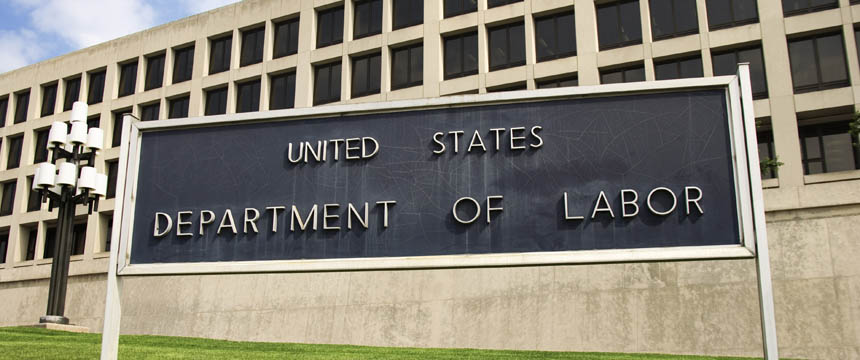

On January 9, 2024, the United States Department of Labor (DOL) issued its long-awaited final rule (“Final Rule”) regarding worker classification under the Fair Labor Standards Act (FLSA or the “Act”).
The Final Rule — which takes effect March 11, 2024 — outlines the DOL’s “new” test for determining whether a worker is an employee (and is thus covered by the Act’s overtime and minimum wage protections) or an independent contractor for purposes of the FLSA. While the Final Rule is not itself “controlling” precedent, it reflects the DOL’s take on worker classification, which courts and other stakeholders use as guidance when addressing classification questions.
As we previewed when covering the DOL’s proposed version of the Final Rule in 2022, “what’s old is new again.” The Final Rule largely jettisons the Trump Administration DOL’s short-lived guidance on worker classification under the FLSA and returns to the previous “totality of circumstances” approach.
Under this approach, six factors are considered:
None of these factors carries any pre-determined weight, none are dispositive, and other circumstances indicative of economic dependence may also be considered.
The Final Rule’s holistic but murky analysis departs from the Trump-era rule’s focus on two “core factors” (control and opportunity for profit or loss) and is widely seen as having more of a pro-worker bend. The DOL’s Final Rule FAQ page reinforces the practical challenge of classifying many workers as independent contractors. For example, the DOL considers “integral part of the business” to mean “critical, necessary, or central to the potential employer’s principal business” — a broad formulation likely covering myriad services. By contrast, the prior rule had effectively eliminated the “integral part” factor, finding it unpersuasive on economic dependence and even misleading in some cases.
Yet the Final Rule does not go as far as the strict “ABC” tests — which start from a presumption of employment status — that govern under some state wage & hour laws, such as California and New Jersey. Employers in states with stricter rules must meet whichever standard provides the greatest protection for workers.
Regardless of the analysis applied, remember that workers cannot “waive” their status as an employee and voluntarily elect to be an independent contractor.
The Final Rule purports to address the concerns raised by many commenters, especially from highly regulated industries, that compliance with “legal obligations, safety or health standards, or requirements to meet contractual or quality control obligations may indicate control[.]” According to the DOL, “actions taken by the potential employer for the sole purpose of complying with a specific, applicable Federal, State, Tribal, or local law or regulation are not indicative of control.” However, the DOL makes clear that anything going “beyond compliance” with these laws or regulations potentially indicates control — a distinction likely to be litigated in misclassification disputes.
Under the Final Rule’s pro-employee guidance, it behooves businesses to proceed with caution when classifying an individual as an independent contractor. Companies should ask themselves (among other key questions relevant to the Final Rule’s six-factor test):
Companies uncertain about their classification decisions should reach out to counsel for advice. While the Final Rule is in many ways a return to the familiar, its issuance serves as an important reminder that independent contractor classifications come with many strings detached.
Close This blog is made available by Foley & Lardner LLP (“Foley” or “the Firm”) for informational purposes only. It is not meant to convey the Firm’s legal position on behalf of any client, nor is it intended to convey specific legal advice. Any opinions expressed in this article do not necessarily reflect the views of Foley & Lardner LLP, its partners, or its clients. Accordingly, do not act upon this information without seeking counsel from a licensed attorney. This blog is not intended to create, and receipt of it does not constitute, an attorney-client relationship. Communicating with Foley through this website by email, blog post, or otherwise, does not create an attorney-client relationship for any legal matter. Therefore, any communication or material you transmit to Foley through this blog, whether by email, blog post or any other manner, will not be treated as confidential or proprietary. The information on this blog is published “AS IS” and is not guaranteed to be complete, accurate, and or up-to-date. Foley makes no representations or warranties of any kind, express or implied, as to the operation or content of the site. Foley expressly disclaims all other guarantees, warranties, conditions and representations of any kind, either express or implied, whether arising under any statute, law, commercial use or otherwise, including implied warranties of merchantability, fitness for a particular purpose, title and non-infringement. In no event shall Foley or any of its partners, officers, employees, agents or affiliates be liable, directly or indirectly, under any theory of law (contract, tort, negligence or otherwise), to you or anyone else, for any claims, losses or damages, direct, indirect special, incidental, punitive or consequential, resulting from or occasioned by the creation, use of or reliance on this site (including information and other content) or any third party websites or the information, resources or material accessed through any such websites. In some jurisdictions, the contents of this blog may be considered Attorney Advertising. If applicable, please note that prior results do not guarantee a similar outcome. Photographs are for dramatization purposes only and may include models. Likenesses do not necessarily imply current client, partnership or employee status.